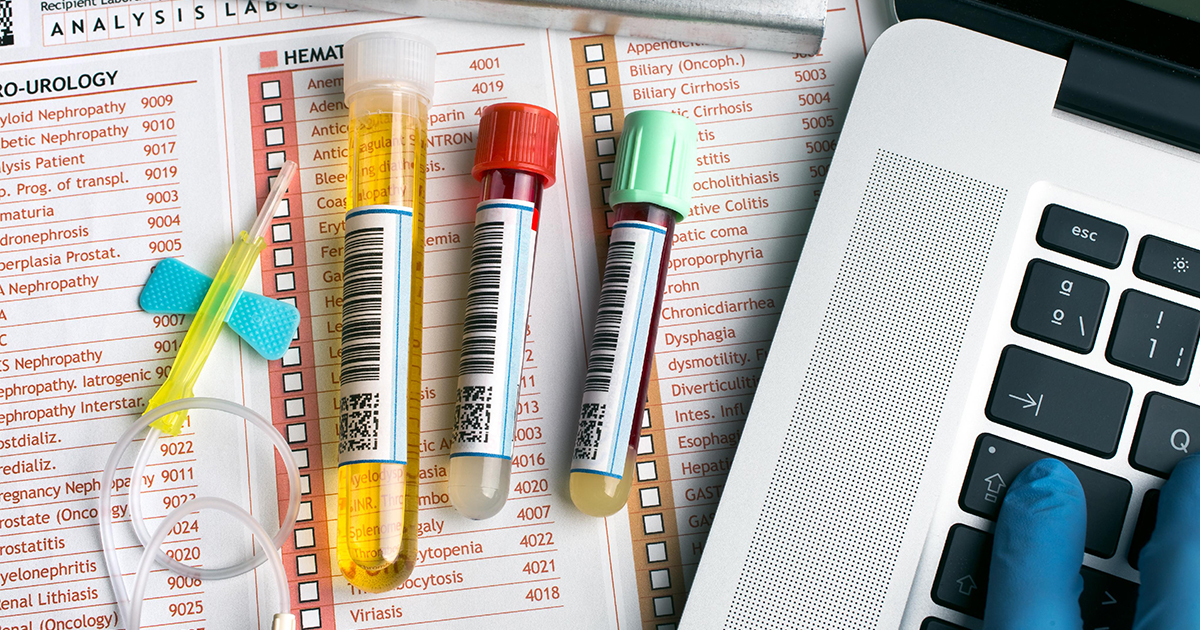How is eGFR Linked to Kidney Health?

Kidneys are named "the silent organ" for a reason. Typically, there are no signs of early kidney function decline. It is common for people to accidentally find out they have kidney function decline when they go for a body check. A regular kidney function test is undoubtedly crucial in kidney protection. The earlier we catch the problems, the sooner we can manage them and delay the progression.
Kidney function test usually consists of basic urine and blood test. They are used to assess how well the kidneys can filter blood metabolites. Based on different testing items, various renal function indicators help reflect the kidneys' health status, including estimated glomerular filtration rate, serum creatinine, blood urea nitrogen, etc. We have another post, "Know Your Kidney Healthy By Understanding Your Lab Tests," which covers more about the differences among those indicators. And we will focus on the estimated glomerular filtration rate eGFR and how it can reflect kidney health in depth.
What is Glomerular Filtration Rate eGFR?
eGFR measures the total amount of blood the kidney can purify in one minute. A higher number refers to better kidney function. In contrast, a lower number of eGFR means weaker kidney function and more metabolic waste remains in the blood.
The eGFR number is calculated by formula. Cockcroft-Gault formula and MDRD formula are the formulas that are commonly used.
Cockcroft-Gault Formula
Male: (140 – age) x weight (kg) / (72 x serum creatinine)
Female: above formula x 0.85
Abbreviated MDRD Formula
Male: 186 x serum creatinine-1.154 x age-0.203
Female: above formula x 0.742
Each formula has its advantages and limitation. For example, most of these formulas may not reflect Asian kidney function accurately as the database was not based on Asian race. Therefore, in recent years, several Asian countries have begun to develop their eGFR calculation to suit their nationals better.
How to interpret eGFR?
Most healthy young adults have an eGFR of 110 – 120 ml/min/1.73m2. However, eGFR will gradually decline with age, with an average drop of 1 ml/min/1.73m2 per year after age 40.
If the eGFR decreases with age, how do we differentiate it from chronic kidney problems?
Chronic kidney problems are when there is kidney damage for more than 3 months, leading to irreversible structural change or function loss. If one meets any of the following criteria, they have chronic kidney problems:
1. The eGFR is greater than 60 ml/min/1.73m2, and there is evidence of kidney damage, such as excessive protein or blood present in the urine or abnormalities found in other kidney tests for more than 3 months.
2. Regardless of any renal damage found, the eGFR is less than 60 ml/min/1.73m2 for more than 3 months.
Chronic kidney problems can be divided into 5 stages.
1. Stage 1: The eGFR level is 90 ml/min/1.73m2, and there are signs of kidney injury.
2. Stage 2: The eGFR level is 60 -89 ml/min/1.73m2 with signs of kidney injury.
3. Stage 3: The eGFR level is 30-59 ml/min/1.73m2, with a rise in kidney damage.
4. Stage 4: The eGFR level is 15-29 ml/min/1.73m2. The kidney function has significantly reduced.
5. Stage 5: The eGFR level is below 15 ml/min/1.73m2.
What to do with a low eGFR?
If kidney injury is discovered in the early stage, follow the instruction advised by healthcare providers, for example, lifestyle changes, to address the leading cause of kidney damage. It will be necessary to start monitoring kidney function regularly. The aim is to maintain normal kidney function. For moderate to severe chronic kidney problems, cooperate with the doctor's treatment. Restriction on diet or fluid may be needed in these stages. For the end stage, healthcare providers will start preparing patients for dialysis or transplant.
- * All research and clinical data should be used as reference purposes only, results may vary.




